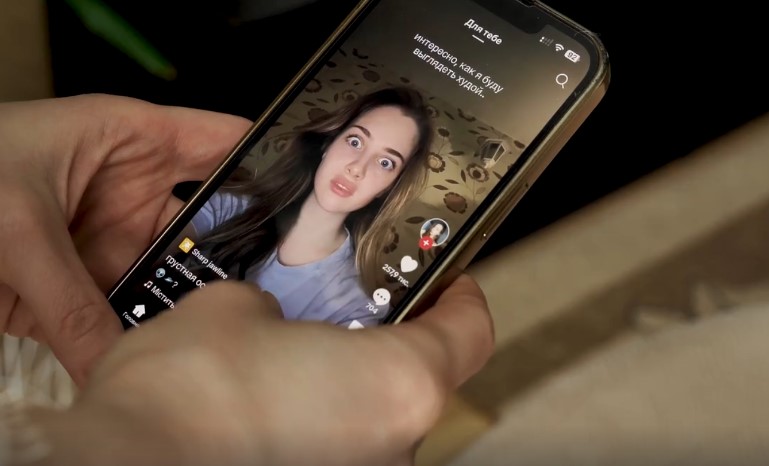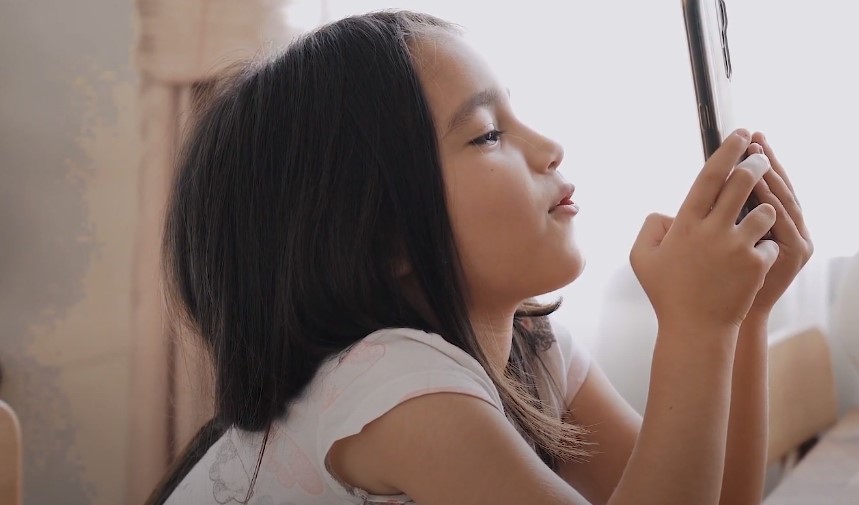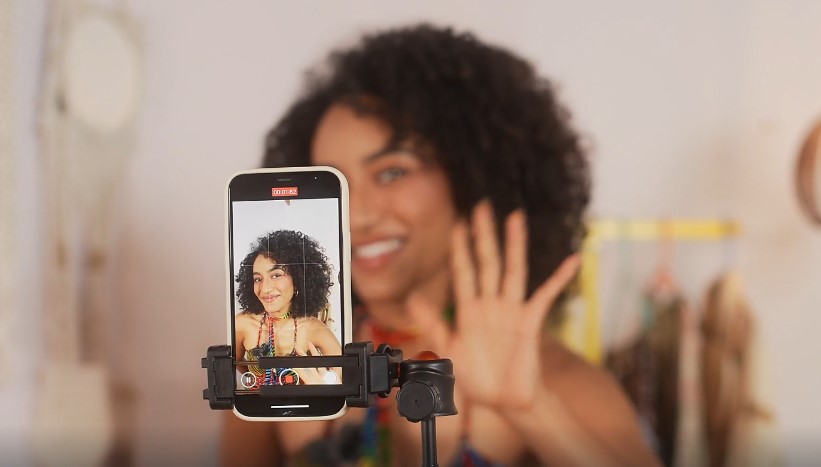Let’s get real: between catching slang in the hallways and fielding eye-rolls when you bring up comma splices, it’s not always easy to make grammar stick. But guess where your students are already spending more than an hour a day? TikTok. And no, it’s not just for dancing or viral stunts.
In fact, short-form video content is quickly becoming one of the smartest tools in a teacher’s back pocket—especially for teaching language and grammar in ways that actually land.
It doesn’t matter if you’re new to social media or already lurking on #TeacherTok, TikTok’s built-in engagement, microlearning-friendly format, and global reach make it a surprisingly effective classroom companion. Let’s break down how to actually use it, without going full influencer mode.
1. Short Grammar Explainers That Stick
@iamthatenglishteacher #beverbs #am #are #is #Was #were #TikTokTeachers #Teachingontiktok #motivatingstudents #grammarreview #iloveteaching #iloveteachinggrammar #iloveteachingELA #ELAteacher #englishasasasecondlanguage #ESOL #socialmediagrammarmistakes
Think 30 seconds on “its” vs. “it’s.” Or a snappy lesson on run-on sentences. That’s the magic of TikTok grammar videos.
Example to Follow
Claudine James, better known as @iamthatenglishteacher, has built a massive following by turning daily classroom lessons into short, memorable TikToks.
Her clips reinforce what students are learning in class, so when they’re at home, they can replay a tricky concept rather than flipping through notes. She’s living proof that short videos can have a long-term impact.
To ensure your quick grammar tips actually reach an audience, consider combining great content with SocialWick’s growth services, which can speed up visibility for new or small accounts.
2. Tap Into Established Language Accounts
You don’t have to create everything from scratch. TikTok is filled with language-learning accounts already doing great work, and yes, many are classroom-appropriate.
Example
@how_to_british, run by Darcy Littler and Anita Chen, breaks down British slang and the differences between British and American English.
They do it with wit and cultural context that clicks with students. Their 625,000+ followers are no accident.
How to Use
- Build a playlist of videos for a unit on idioms or regional dialects
- Assign students to analyze the language in a video—why is it used that way? What grammar is at play?
- Ask students to find similar accounts in French, Spanish, or German and bring examples to class
3. Practice Conversations with the Duet Tool
TikTok’s Duet feature lets students record side-by-side responses to an original video. It’s brilliant for back-and-forth conversation practice, without the anxiety of public speaking in real life.
Example
A teacher posts: “Excuse me, how do I get to the train station?”
Students Duet back with directions in English, French, or Spanish, using sentence structures from class.
This is especially helpful for:
- Practicing question and answer formats
- Simulating real-life scenarios (e.g., ordering food, greeting someone formally)
- Getting shy students to participate asynchronously
4. Listening Comprehension, But Cooler
Forget the stale audio clips from your old textbook CD. TikTok offers native speakers, real-world accents, and unscripted context, all wrapped up in relatable content.
Try This
- Assign a video in the target language (maybe a food review from Paris, or a day-in-the-life from Mexico City)
- Ask students to jot down key vocabulary, tone, and what they understood
- Use it as a springboard for discussion or vocabulary quizzes
5. Use the FYP to Spark Opinions

One of TikTok’s superpowers is that it shows students content they actually care about. So why not use it to flex those opinion-writing muscles?
Activity Idea
Ask students to pick a video from their For You Page and write a paragraph (or record a short oral response) expressing their thoughts, using structures like:
- “I believe that…”
- “In my opinion…”
- “One reason is…”
6. Turn #BookTok into Book Reports
If your students say they “don’t know what to read,” #BookTok is your new best friend.
The tag is packed with peer-to-peer book reviews, summaries, and hot takes on everything from classics to fantasy epics.
Try This
- Have students scroll through #BookTok for recommendations
- Assign them to make their own TikTok-style review of a book they’ve read
- Require them to use specific grammar points (e.g., past tense, modal verbs, descriptive adjectives)
You’re covering comprehension, grammar, and creative expression all in one go.
7. Use TikTok for Bite-Sized Grammar Rules
@luciebfink Who vs. whom ✨ Quick grammar lesson!!! Remember: he/who, him/whom #englishgrammar #grammarlesson #whovswhom #whom #who #learnenglish #fyp #englishlesson
Sometimes, less really is more, especially with tricky grammar.
Ideas for Short Grammar Clips
- When to use “who” vs. “whom”
- What the subjunctive looks like in Spanish
- Pronunciation hacks for silent letters in English
Keep it tight. Use examples. Bonus points for humor.
Teachers Who Are Making It Work
| Teacher | TikTok Handle | Subject | Follower Count | Focus |
|---|---|---|---|---|
| Claudine James | @iamthatenglishteacher | English | 900,000+ | Grammar tied to classroom writing |
| Darcy Littler & Anita Chen | @how_to_british | English | 625,000+ | British vs. American English with humor |
| Winnie Sloan | @mrssloanbiology | Science | 118,600 | Microlearning in biology (shows broader potential) |
They’ve proven that TikTok isn’t a trend—it’s a viable tool. Whether it’s grammar, slang, or mitosis, students are paying attention.
A Few Ground Rules for TikTok in the Classroom

Let’s be clear, it’s not just plug-and-play. Using TikTok in education requires a bit of structure.
Privacy First
TikTok is public by default. If students are creating or engaging, walk them through privacy settings. Use classroom accounts or tools like BookWidgets to recreate TikTok-like activities without requiring sign-ins.
Vet the Content
Not every “teacher” on TikTok is qualified. Teach students how to evaluate content:
- Is the creator credentialed?
- Are facts cross-referenced elsewhere?
- Are comments moderated?
Credibility often gets judged by likes and views—so it’s worth having that conversation about digital literacy.
Use Hashtags to Find Content
Search tags like:
- #EduTok
- #GrammarTok
- #LanguageLearning
- #BookTok
You’ll find a surprising amount of gold, especially if you’re specific in your search.
It’s a Supplement, Not a Replacement
TikTok works best when it’s used to reinforce lessons or add energy to your content—not replace structured instruction.
What the Stats Say
Here’s a quick rundown of what’s fueling TikTok’s classroom rise:
| Metric | Details |
|---|---|
| U.S. Users | 65.9 million |
| Daily Time (Ages 4–14) | 82 minutes |
| Top Subject | English (esp. vocabulary & pronunciation) |
| Approval of Teacher Use | 86% say it’s appropriate |
| Credibility Filters | Likes (55%), views (53%), followers (51%) |
| Why Students Use It | Accessibility (60%), better comprehension (57%) |
Final Words
TikTok probably wasn’t designed to help someone grasp the present perfect or master gendered nouns in French, but here we are. When used thoughtfully, it can inject new life into language lessons, build student confidence, and bring grammar from the textbook into their real-world scrolling.
So no, you don’t need to choreograph a grammar dance. You just need to meet students where they already are—and maybe post a comma tip or two while you’re at it.
Whether you’re a TikTok newbie or a teacher with a tripod, there’s space for your voice. The key? Keep it short, keep it smart, and keep it relevant.

